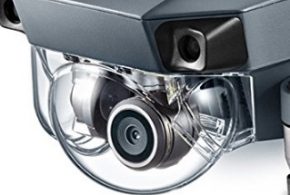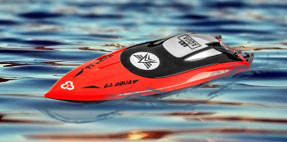The DJI M600 – Next Generation Aerial Platform Release
The Matrice 600 is the next generation of aerial platform released on April 14th, and it is a very groundbreaking event for anyone that is into film making or using drones for industry. This new model puts to use the DJI’s brand-new A3 Flight controller onboard and features advanced Lightbridge 2 video-transmission technology that can produce HD live-streaming capability at distances up to five kilometers.
Please hit the facebook like or share button if you like our work!
A new way of operating that already has much data and information pre-programmed into the flight controller, it was truly created to minimize setup time, and get the pilot in the air as soon as possible. What users are going to love most about this platform is that it is the most powerful program that DJI has ever produced, yet the easiest to use.
DJI Matrice 600 Details
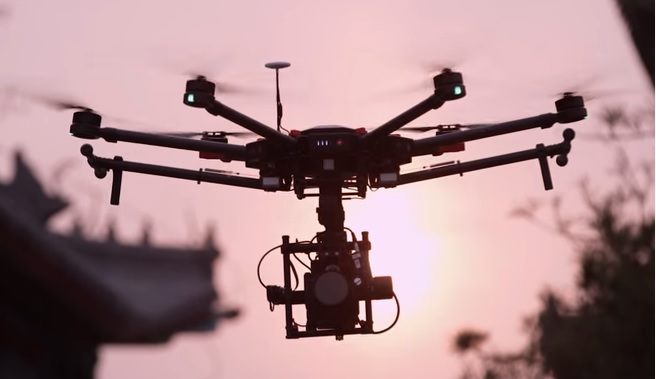
The system itself has a maximum payload of 6.0 kilograms, which is perfect to optimize the full range of DJI’s Zenmuse Gimbals: The Z15 and the Zenmuse X series cameras are included, which are some of the leading elements out there that provide true stabilized aerial imagery. Users are also going to be excited that the carrying weight allows it to fly the incredibly awesome Ronin MX, which is the DJI’s newest handheld gimbal with aerial three-axis ability.
The propulsion system is completely dustproof, which simplifies maintenance and increases durability, and it has motors that are actively cooled, which ultimately provides a flight that is more reliable and stable. The landing gear is retractable, so when you are mid-air you are getting true 360-degree unobstructed imaging, with absolutely nothing in the way to block the killer images you want to shoot.
Power is supplied by Intelligent Batteries courtesy of DJI themselves, and the customized battery-management system allows for the pilot to simply push one button and keep flying if any of the batteries fails. Even with a Zenmuse X5 camera attached, the m600 will fly up to 36 minutes, and can stay airborne for around 16 minutes if hauling a larger camera.
What was truly anticipated about the M600, and sets it apart from other controllers, are sine-wave driven, very intelligent electronic speed controllers to ensure accurate performance, and that all manoeuvers are carried out safely and efficiently. Self-adaptive flight systems are also on board that automatically adjust parameters, based on the payload you are taking on for the flight.
If needed, you can upgrade to the A3 PRO system, which features advanced diagnostic algorithms that analyze sensor date gleaned from the three Global Navigation Satellite System units and three inertial measurement units onboard. The GNSS system onboard can also have the option of being upgraded to DJI real-time Kinematic technology, which offers positioning so accurate that it is right down to the centimeter.
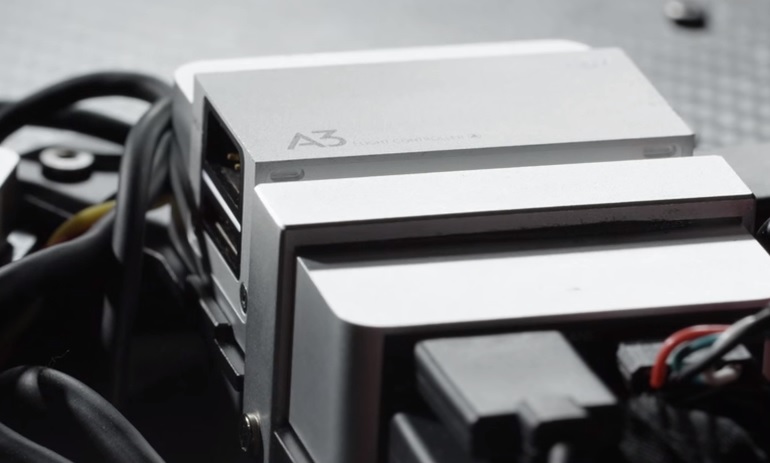
Where you really see the benefit of this is in industrial settings, and when you are dealing with cinematic shots that can be precisely replicated. Many who are piloting drones this year are also wondering which elements can help with magnetic interference, and the RTK technology onboard is the tool available that helps withstand this element. Previously, users had tried to use methods such as re-calibrating the compass, moving the battery and power wires under the frame, and even raising the actual GPS in the air.
The very useful DJI GO app is supported fully by the DJI m600, and this is where you get a live video feed, very useful stats on battery and redundancy status, transmission strength, and other data to keep the user informed of flight status during all intervals of your session. It also puts you at the helm of controls for aperture, camera shutter speed, photo and video capture, and remote focus for the X5R and Zenmuse cameras.
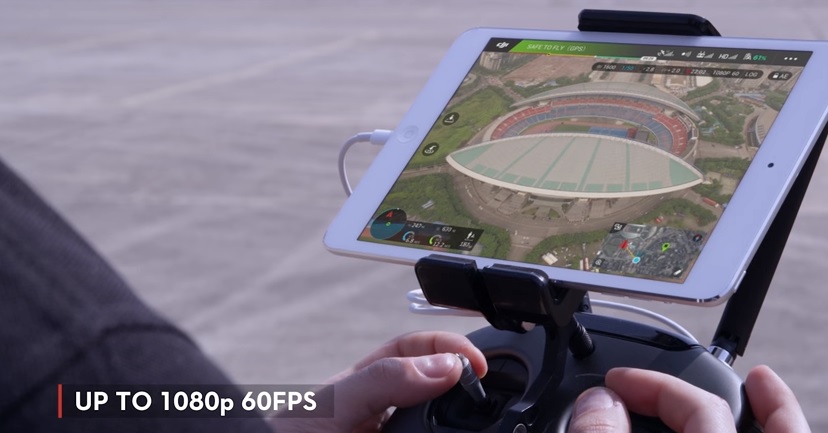
There are dual parallel CAN and API ports that can be used to connect DJI devices, including the RTK GPS units, and Guidance sensor system. Pilots across the globe are going to be amazed at how stability issues, clarity of images, and options for gimbals and add-ons are going to literally explode over the next year, and this is just one example of how professional movie makers and surveyors are going to really up the ante on even their very last commercial or film.
DJI M600 And The Ronin
When you pair this revolutionary technology with the brand-new DJI Ronin-MX, what you are getting is the best three-axis aerial video stabilization you can obtain. Many pilots were asked what they would change or what their biggest needs were in the current climate, and they responded by saying that having minimal setup was one of the elements that were most important to them.
After you partake in this pair-up, the Ronin cooperates perfectly with the M600, and along with the A3 flight controller and Lightbridge 2 transmission system, you are getting the very first universal aerial gimbal from DJI that efficiently communicates at all times with the onboard DjI flight controller. What film directors are going to see as a complete change-up and revolutionary additive to the mix is that they can truly integrate an awesome video-transmission system, a top-class flight controller, and have wide available support for many cameras and gimbals.
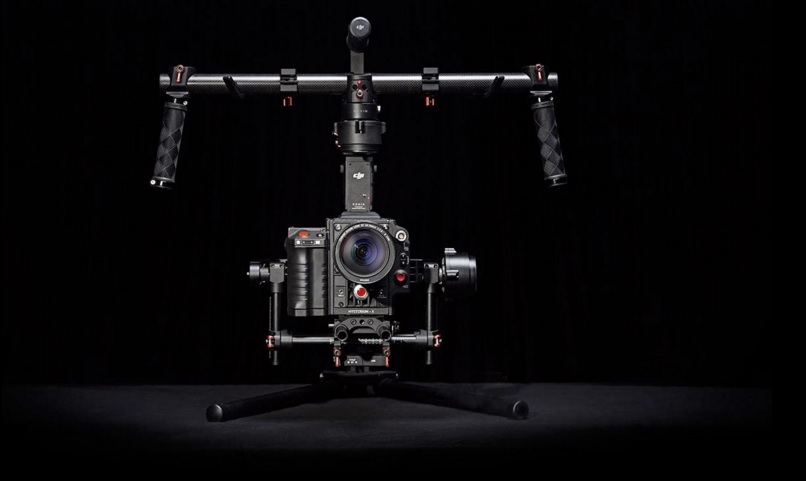
From real estate to action sports and those who are offering vacation properties, the ability to get cinematic-quality shots is going to open many doors for folks, and those who view the finished product will be blown away as well. When you partner it with an optional accessory, the Ronin-MX can transmit video real-time from a mounted camera, making full use of the many capabilities that the Lightbridge 2 offers.
There is also a wireless adapter available to mount to the Focus remote so you can have full compatibility with the DJI Focus itself. The M600 puts to use very intelligent ESC’s to make sure that every time you take it up in the air, it’s going to be accurate, safe, and efficient, while the flight systems are able to self-adapt into flight parameters based on the payload you are carrying.
DJI Matrice 600 Specs
With a 5km long-range and very low latency, every user who finds their own canyon, field, or other scenic location to fly over will also be delighted with the extended flight time. As far as the structure is concerned, the diagonal wheelbase is 1133mm, and the unfolded aircraft dimensions are 1668 mm x 1518 mm x 759 mm (Propellers, frame arms, and GPS mount unfolded).
The weight of the unit is 9.1 kg, and when you are ready to go with the batteries, it’s 9.6 kg. Maximum takeoff weight that the Matrice 600 can handle is 15.1 kg, and the propulsion system is the motor model DJI 6010. The propeller model is the DJI 2170, and the hovering accuracy (P-mode, with GPS) is as such: Vertical 0.5m, horizontal 1.5m.
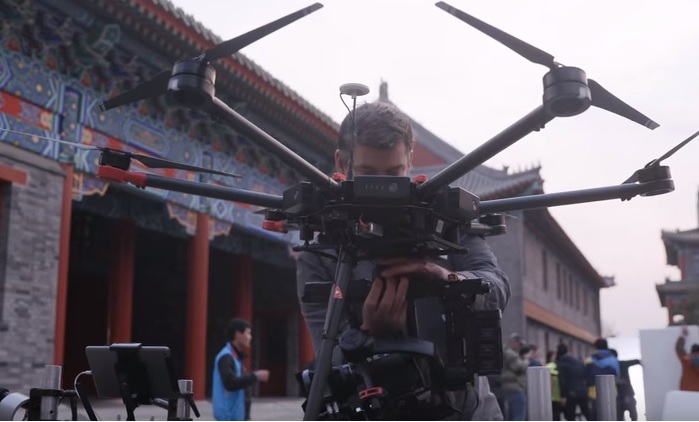
Performance specs on the unit are very impressive: the Max Angular Velocity is pitch 300degrees/s, and the Yaw resides at 150 degrees/second. The Max Pitch Angle is 25 degrees, and the Maximum speed of Ascent is 5 m/s. Maximum wind resistance is one of the most important stats on any drone or flight system: this one is 8 m/s.
Maximum Altitude above Sea Level is 2500 m, and with absolutely no wind, the Max Speed is 18 m/s. As far as hovering time, with six batteries, you are looking at 35 min, and with a 6 kg payload: 16 min. Here is a full list of supported DJI Gimbals: the Zenmuse X3; Zenmuse X5 series; Zenmuse XT; Ronin-MX; Zenmuse Z15 series HD gimbals: Z15-A7, Z15-BMPCC, Z15-5D III, Z15-GH4.
The proper operating temperature for the device is 14 to 104 degrees F, and -10 to 40 degrees C. As far as specs on the remote controller are concerned, the operating frequencies are as follows: 920.6 MHz to 928 MHz (Japan), 5.725 GHz to 5.825 GHz, and 2.400 GHz to 2.483 GHz. Here are the maximum transmission distances in an unobstructed zone: FCC Compliant: 3.1 miles (5 km), CE Compliant: 2.1 miles (3.5 km).
To keep those batteries fresh, the charger model is the A14-1000P1, and the voltage is an output of 26.3 V. The power rating is 100W, and the video output port is HDMI, SDI, and USB. A video that shows the system in action also gives quite a bit of insight from a director who is shooting a martial arts scene in Beijing: What really excites him most about it is its precision. He claims that the ability to be within just centimeters of a destination or hover spot takes the cake for him, as well as the ability to carry a camera that meets the highest standards of any blockbuster film.
Watching the martial arts segment that they are filming is dazzling, and the flying overhead atop the building is a thing of sheer amazement. As the martial artist spins and attacks those coming after her, a flawless shot takes place when the drone slowly elevates higher, and she almost appears as a dish of flower petals, attacking her aggressors one-by-one.
When carrying the new Ronin MX Gimbal, the pair-up is truly phenomenal, and the HD video can be transmitted at a distance of just over 3 miles! You don’t have to install and configure the flight controller, and you don’t have to install or configure the gimbal, it’s all set to go for you.
DJI M600 Release Video
DJI M600 FAQ
1. What are the new features of the Matrice 600 when compared to the S1000+?
Answer: The $1000+ is just an aerial platform, and actually does not have integrated electronic devices on board. The M600 is a fully integrated aerial platform that is souped-up enough for professional film making, and optimized for industrial applications. The on-board A3 flight controller ensures the most reliable flight performance you could ask for, and the Pro Propulsion system is the tool that is amazingly efficient as increasing payload. The DJI M600 also has the added benefit of the Lightbridge 2 transmission system, which is what brings life HD view and provides the ability to communicate with gimbals, such as the amazing Ronin-MX.
2.How can I retract the landing gear on the DJI M600? Is the M600 able to retract the landing gear automatically?
Answer: When the M600 is in the air, you just have to flick a switch on your remote controller. Within the DJI GO app, there is a toggle that enables the M600 to retract the landing gear when it is exactly 1.2m above the take-off point. It should be noted that the landing gear will NOT lower itself; the pilot needs to manually toggle with the switch to activate the gear.
3. Can I use other flight controllers than the A3 with the M600?
Answer: When the M600 arrives at your door, it comes seamlessly integrated with the A3 flight controller, and so there is simply not a need to worry about installation of others.
4. Can the DJI M600 A3 flight controller be used on other aerial platforms?
Answer: What you get with the M600 is an A3 flight controller that is specifically customized for this model, and can ONLY be used on this one. DO NOT remove the A3 from the M600 and install on other platforms, as it will not be functional at all. The way that the device has been designed, using the controller on other platforms is of no concern.
5. Will the flight performance and accuracy be increased if I upgrade to A3 Pro?
Answer: Without a doubt, the A3 Pro enhances the reliability and stability of the M600 by providing redundancy during breaches of interference, or if the GNSS or IMU models fails. When it comes right down to it, the IMU and GNSS modules can each only be in effect at one time during the flight, not simultaneously. Therefore, the actual flight accuracy remains the same as with the A3.
6. What is the maximum flight time of the DJI M600 ?
Answer: When usingTB475 batteries, the M600 can remain up in the air for 35 minutes with no extra payload, or 16 minutes with a payload of 6kg. When using TB485 batteries, the M600 can easily fly for up to 40 minutes with no extra payload, or 18 minutes with a payload of 5.5 kg. This is an area of prime concern, as directors and producers are constantly wondering how the next shot will be mapped out, and how long it will take.
7. How is the DJI M600’s accuracy enhanced by adding the D-RTK module?
Answer: The accuracy of hovering will increase to within 2cm horizontally and 3cm vertically with D-RTK. This is a huge benefit, as many who use drones frequently demand precision, and are going to want to know this as they are planning shots that require precision and utmost accuracy.
8. How do I best prevent propellers from coming loose on the DJI M600?
Answer: If you want the propellers to stay put and not come loose at all, screw position indicators on them, and then the adapters enable you to see if there has been a screw that has come loose. Also, you can check that the marks do align perfectly before each flight, to ensure safety; when propellers do come loose, it can be a very unpleasant experience added to an otherwise organized shoot.
9. Can I swap the motors on the DJI M600 and Agras MG-1?
Answer: These two motors are not interchangeable; they share the same specifications for performance, but have a different exterior design.
10. What are the differences between the TB47D (for the M100) and the TB47S (for the M600)? Can I use TB47D or TB48D batteries with the M600?
Answer: To get the aircraft to simply power up, you only need to engage one of any six batteries installed on the M600. While running, the other batteries will turn on and synchronize their own boot-up sequences. One important thing to note is that if the voltage discrepancy across the batteries exceeds 1.5v, you will not have a synchronized boot-up sequence, and the battery’s management system will send you a definitive error message.
11. How does the battery redundancy system on the M600 work?
Answer: If you are mid-flight and any of the batteries fails during flight, the M600 will be able to rapidly re-calculate the remaining battery capacity, then hover in its current position or begin landing automatically. While the M600 is in mid-hover, you can manually take over, and land it, then give the batteries a thorough examination.
12. How do I update the firmware on the M600?
Answer: If you are needing to update the firmware for the M600 aircraft, use the DJI Assistant 2 software, which will allow for full updating and expansion capabilities. You are only able to update the firmware through the DJI Go App for the remote controller.
13. What can I do when the aircraft is unable to take off and the flight controller LED signals red?
Answer: There is a location for you to go to for error messages that will tell you what the exact problem is. Just connect the M600 to the DJI Go app, and the status bar located at the top of the display will key you in to exactly what is wrong.
14. The Battery Management Board gives an error message when I turn on the M600. How do I resolve this problem?
Answer: The most important thing to do is make sure that the batteries are installed firmly, while paying special attention to the batteries that are not yet turned on. If they are all installed to their firmest, just check the capacity remaining of all the batteries. If the batteries that are not turned on are low on charge, then simply recharge all batteries to the full notch. Doing so will assure that your flight will go smoothly, and that you will have full battery power.
15. Is it true that the aircraft will only take off when all six batteries are installed?
Answer: This is absolutely true, and making sure that every DJI M600 battery is fully charged is recommended before flight.
Just in time for summer, this release is truly any seasoned director’s dream. Many masterpieces such as the original “Jaws” and “Close Encounters of the Third Kind” were beginning to open minds as to what could be done when even more advanced technology arrived, as well as Ridley Scott’s “Blade Runner”.
One of the best things we have noticed about drone photography is what happens with water, and just how astounding the results are when you get a drone near or above a body of clear blue h2o. Genius Danny Boyle, of “Slumdog Millionaire” fame, showed us some early tastes of what you could do from overhead in his pleasantly dazzling “The Beach”, and now two decades later, the sky’s literally the limit.
The integrated Lightbridge 2 supports dual video input, and users are really going to enjoy controlling flight with the A3. When dealing with batteries, the charging hubs for the M600 and Inspire 1 are compatible with all within the TB47/TB48 variety. Documents and manuals included for download on the company website are “The DJI M600 disclaimer and Safety Guidelines”, “Matrice 600 In the Box”, and “Matrice 600 Intelligent Flight Battery Safety”.
During storage, your temperature for less than 3 months can range from -4 degrees to 113 Degrees F, and -20 degrees to 45 degrees C. The optimum charging temperature is 41 degrees to 104 degrees F, which is 5 degrees to 40 degrees C. The mobile device holder supports smartphones and tablets, and the specs on the built in battery are 6000 mAh, and 25 LiPo respectively.
The video output ports are HDMI, SDI, and USB, which allows users to simply choose which way they want the world to see their epic shots, or store them for later editing. The ease of use, ways in which the technology has improved, and overall stability of the M600 will turn many heads, and be the apple in the eye of many a tech-savvy movie maker.


